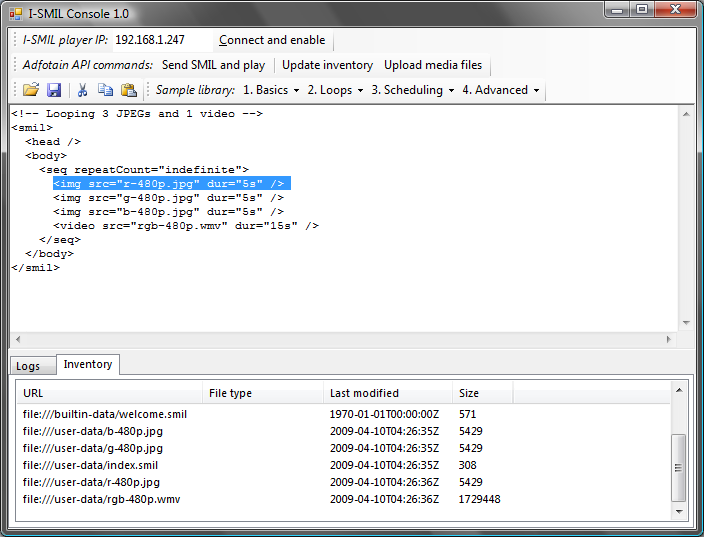Difference between revisions of "Main Page"
(→Contents) |
(→Contents) |
||
| Line 56: | Line 56: | ||
** [[MediaRSS|Media RSS Bridge]]: connecting a media RSS content feed to SMIL | ** [[MediaRSS|Media RSS Bridge]]: connecting a media RSS content feed to SMIL | ||
** [[Maintenance tasks]]: A-SMIL extension for player upkeeping | ** [[Maintenance tasks]]: A-SMIL extension for player upkeeping | ||
| + | ** [[Cache Control]]: A-SMIL extension for media cache control | ||
* [[SMIL Reference]] | * [[SMIL Reference]] | ||
** [[Compliance levels]]: Subsets of SMIL defining performance levels | ** [[Compliance levels]]: Subsets of SMIL defining performance levels | ||
Revision as of 07:36, 3 June 2013
 Free source code: Download full source code for Project Hornet, a Windows-based management console for SMIL media players, written in C# language. This website is an "Advocacy for SMIL" (hence A-SMIL) as an open standard for digital signage. Thank you for all your support. We are on Google's page 1 for search on SMIL. SMIL Supported by Most Leading Digital Signage Systems. Read more... SMIL as an Open Standard for Digital SignageSMIL (pronounced "smile") stands for "Synchronized Multimedia Integration Language" and defines scheduling ("Synchronized"), video, audio, images, text ("Multimedia"), multi-zone screen layout ("Integration") in an XML-based text file format ("Language"). It is an open specification (royalty-free to use) created by the World-Wide Web Consortium, the same organization responsible for defining the HTML language, an open standard for the Internet. Products that utilize SMIL are available from leading companies such as Adobe, Apple, Microsoft, and Real Networks. Digital signage deals with scheduling multimedia files for playback on digital displays connected on an IP network. The industry has roots tracing back for a few decades, but has recently expanded rapidly due to the proliferation of low-cost flat panel displays that are easy to install and maintain in public space. As the market expands out of the "emerging" status, mainstream customers demand compatibility and interoperability among products from different vendors. SMIL appears to be an ideal technology to answer the needs of the industry. A SMIL playlist that plays 2 videos repeatedly looks as simple as this: <seq repeatCount="indefinite"> <video src="ad1_15s.mpg" /> <video src="ad2_30s.mpg" /> </seq> Get an overview on this site via Guided navigation |
Contents
|